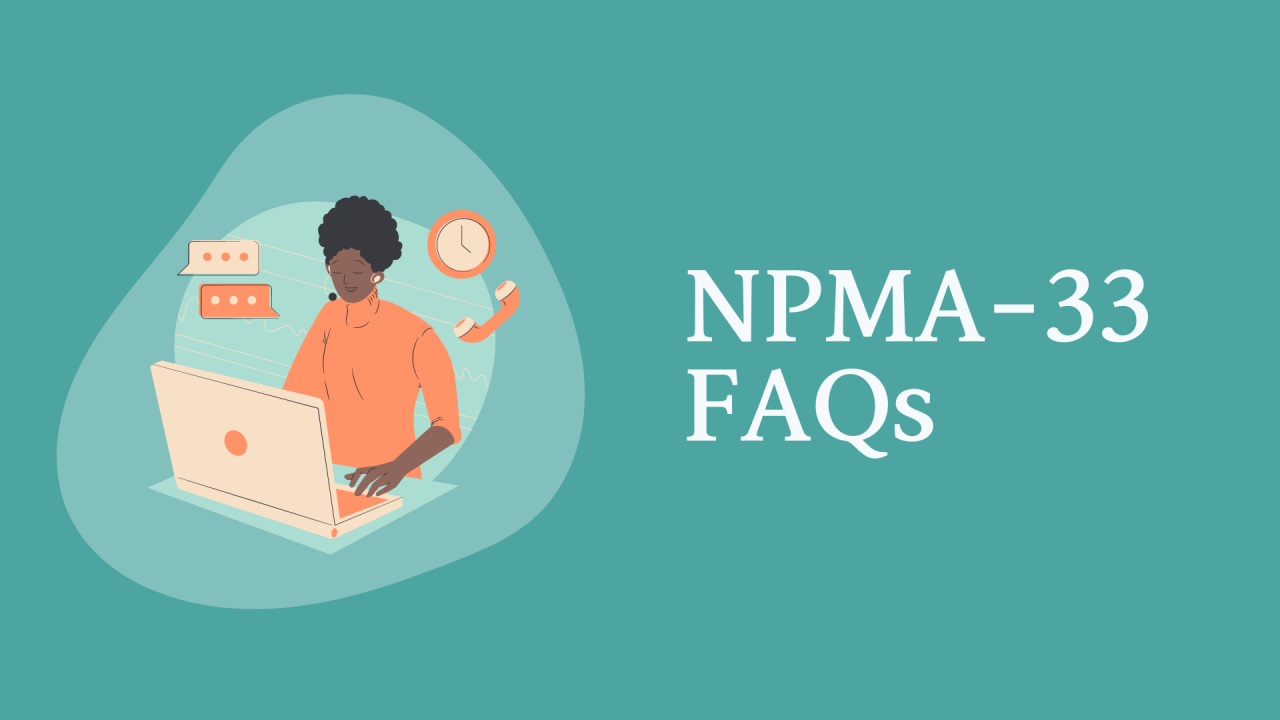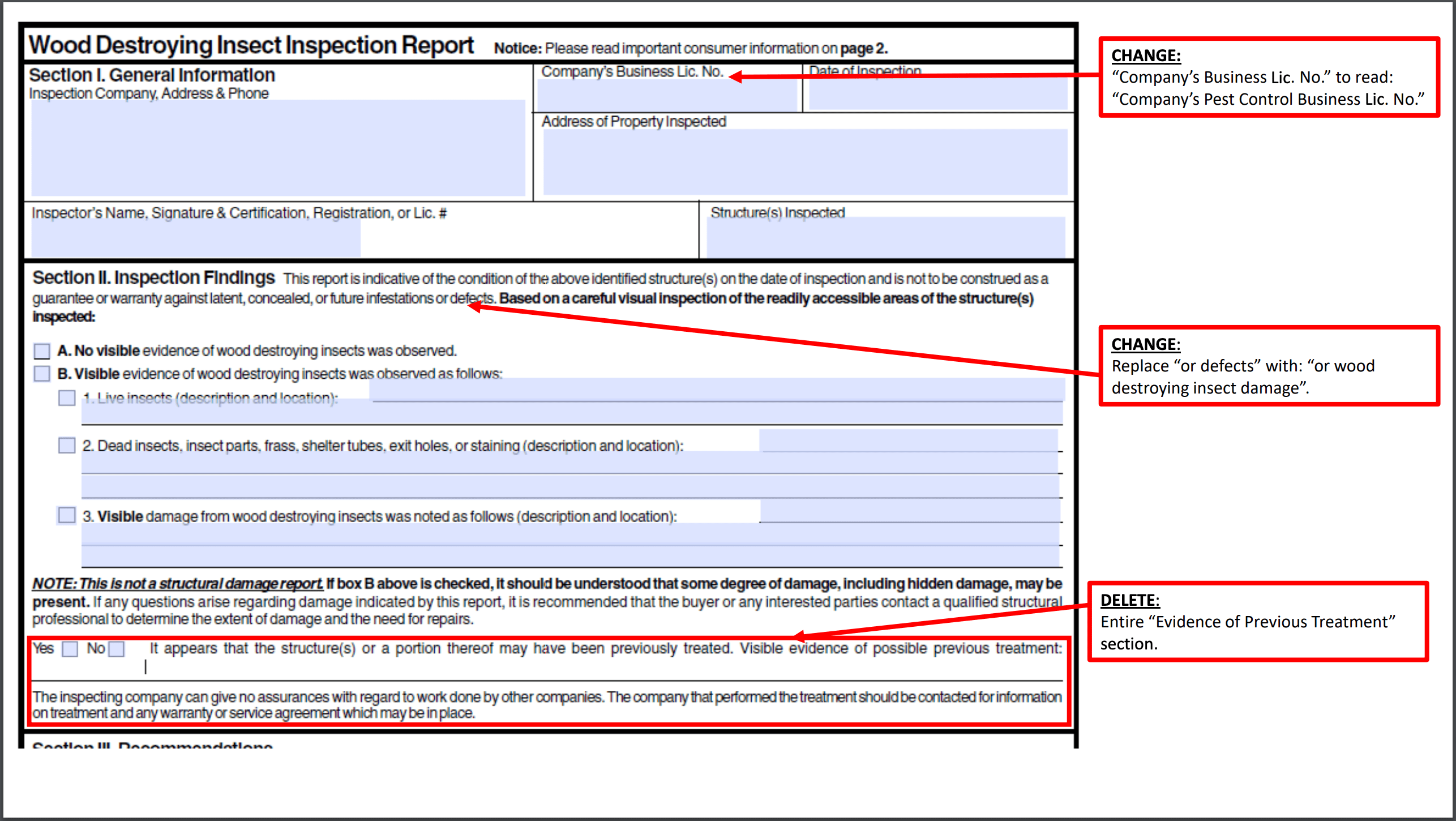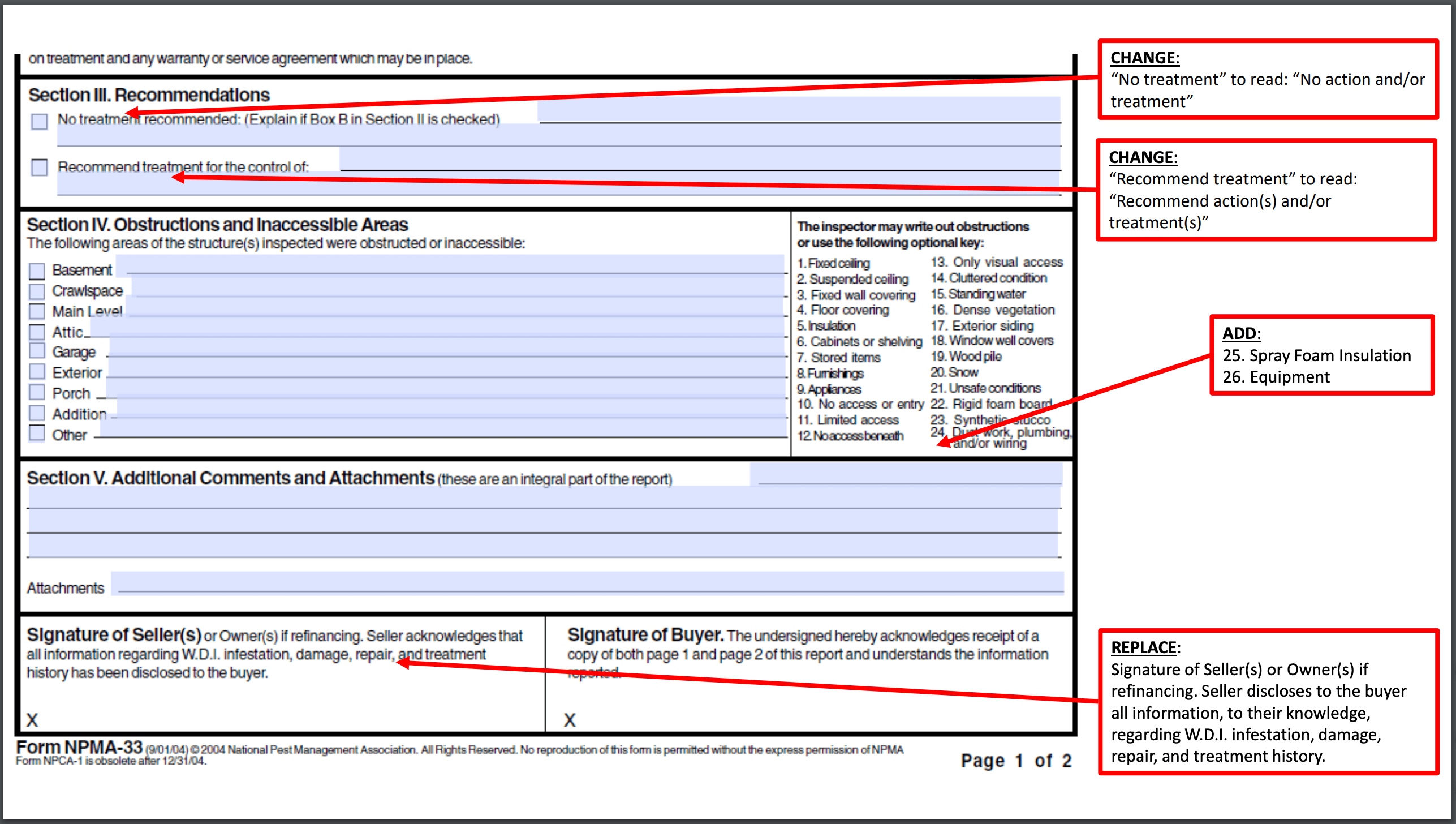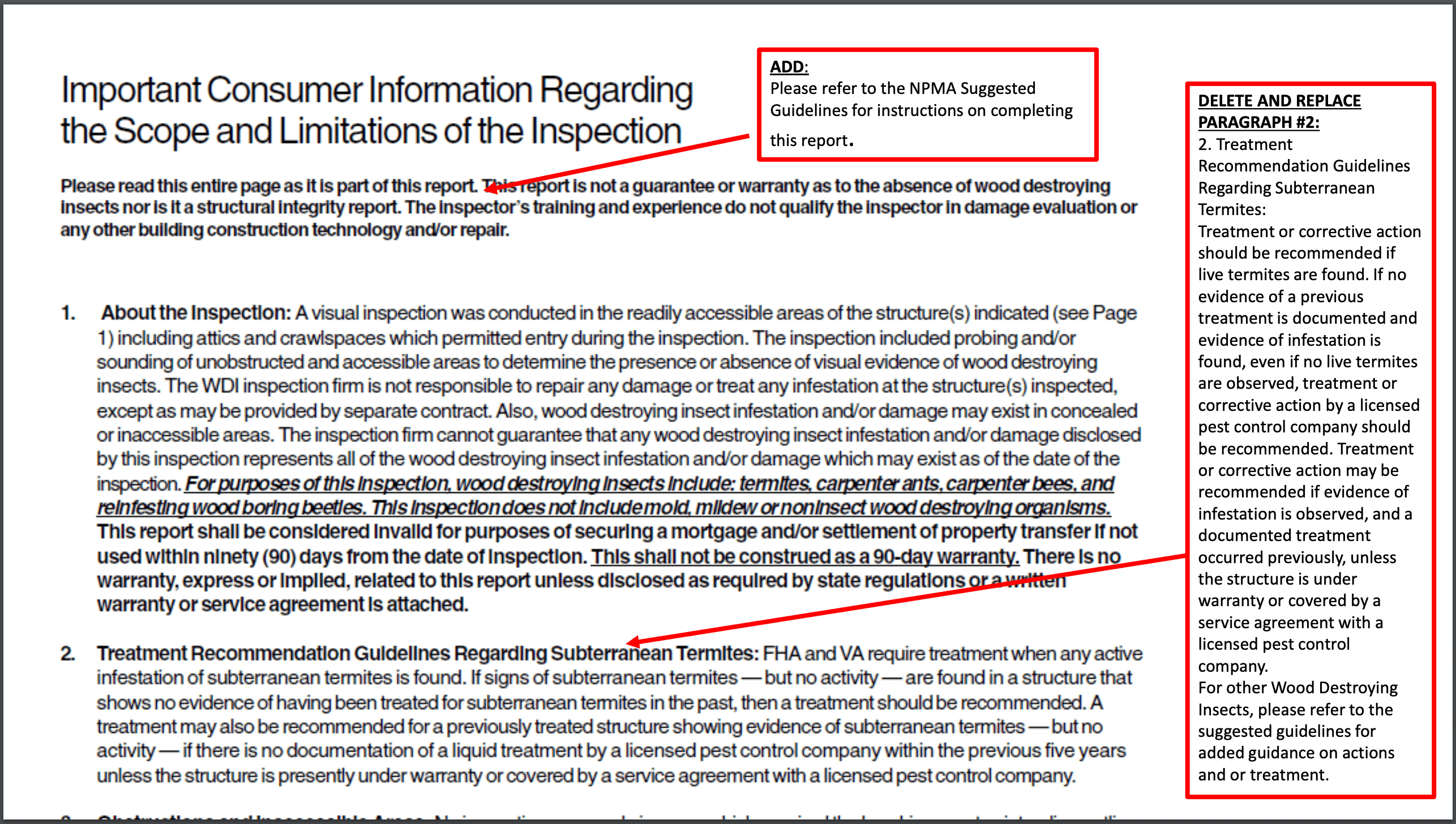NPMA-33: What’s changed? Why Should You Care & Frequently Asked Question (FAQs)
Get a detailed section-by-section overview of all the changes made to the NPMA-33 WDI form, and why you (or your pest control company) should care about these changes. We know there’s a lot to learn and read about the new NPMA-33 WDI form and the updates. Get answers to all the frequently asked questions.

If you run a pest control service company and provide wood-destroying insect (WDI) inspections and treatments, it’s likely you have used or heard about NPMA-33 form.
For those who don’t know, an NPMA-33 form is a wood-destroying insect inspection and treatment form, authorized and copyrighted by the National Pest Management Association (NPMA).
Apart from pest control companies or service providers, It is also required:
- For real estate transactions involving HUD/VA loans.
- When traditional mortgage lenders require a WDI inspection.
Technically, an NPMA-33 form should be called Wood Destroying Insect Report. But it is most commonly known as ‘Termite Closing Letter.’
Among other common names used by pest control professionals are:
- Termite Letters
- Clearance letter
Whatever people call it, there are some noticeable changes in 2020 that you need to know about.
So, without any further delay, let’s get to it and look at what has changed.
What’s new? A section-by-section walk through.
Section I: General Information
Section I in the new NPMA-33 WDI form has one change.
It now specifically state and ask for ‘Company’s Pest Control Business Lic. No.’ than asking for ‘Company’s Business Lic. No.’
| Previous NPMA-33 WDI Form | Updated (New) NPMA-33 WDI Form |
| ‘Company’s Business Lic. No.’ | ‘Company’s Pest Control Business Lic. No.’ |
The main idea behind incorporating this change is to be more specific and clear on what is required.
Section II: Inspection Findings
Section II in the new NPMA-33 WDI form has two changes:
1) The word ‘defects’ is changed to ‘wood destroying insect damage’ at the request of the National Association of Realtors.
2) Another noticeable change in this section the deletion of the entire ‘‘Evidence of Previous Treatment’ section.
In the previous NPMA-33 WDI form, technicians had to put a tick mark in “yes” or “no” box if a structure appeared to have been treated.
| Previous NPMA-33 WDI Form | Updated (New) NPMA-33 WDI Form |
| ‘defects’ | ‘wood destroying insect damage’ |
| ‘Evidence of Previous Treatment’ Section | The whole section is removed. |

Section III: Recommendations
1) The word ‘treatment’ is updated and expanded to ‘action and/or treatment’ for both the checkboxes.
This is to give service providers more options for recommending non-chemical WDI remediation.
| Previous NPMA-33 WDI Form | Updated (New) NPMA-33 WDI Form |
| ‘No treatment’ | ‘No action and/or treatment’ |
| ‘Recommend Treatment’ | ‘Recommend action(s) and/or treatment(s)’ |
Section IV: Obstructions and Inaccessible Areas
In the name of a change or an update, this section sees the addition of two items to the list of potential obstructions to inspection.
1) Spray foam insulation.
2) Equipment (anything from commercial kitchen appliances to HVAC equipment).
If a technician finds a potential obstruction that isn’t a part of the list, she may choose to write out a description of it.
Signature of Seller(s)
At the request of the real estate industry, NPMA added ‘to their knowledge’ text to the ‘signature of seller(S)’ statement. After the update, here is what the ‘signature of seller(s)’ statement looks like in the new NPMA-33 WDI form.
| Previous NPMA-33 WDI Form | Updated (New) NPMA-33 WDI Form |
|
Signature(s) or seller(s) or owner(s) if refinancing. Seller acknowledges that all information regarding WDI infestation, damage, repair, and treatment history has been disclosed to the buyer. |
Signature(s) or seller(s) or owner(s) if refinancing. Seller discloses to the buyer all information, to their knowledge, regarding WDI infestation, damage, repair, and treatment history. |
Another important thing to notice here is, that technicians are not required to collect the sellers’ signatures; it is the responsibility of the real estate agent or lender.

Page-2: Important Consumer Information Regarding the Scope and Limitation of the Inspection
The main objective of page #2 of the NPMA-33 form is to help consumers understand the inspection process, limitations, and treatment recommendations.
As far as updates and changes are concerned, there are two main changes on the second page.
1) The first one is a relatively smaller one.
| Previous NPMA-33 WDI Form | Updated (New) NPMA-33 WDI Form |
|
Please read the entire page as it is the part of this report. This report is not a guarantee and warranty as to the absence of wood-destroying insects nor is it a structural integrity report. The inspector’s training and training do not qualify the inspector in damage evaluation or any other building construction technology and/or repair. |
Please read the entire page as it is the part of this report and refer to the NPMA Suggested Guidelines for instructions on completing this report. This report is not a guarantee and warranty as to the absence of wood-destroying insects nor is it a structural integrity report. The inspector’s training and training do not qualify the inspector in damage evaluation or any other building construction technology and/or repair. |
2) The second one is a major one wherein the paragraph for point #2 – ‘Treatment Recommendation Guidelines Regarding Subterranean Termites’ – is re-written.
These changes are made to make para #2 more concise, easier to read, and simple to understand for consumers.
Apart from the language, the major change is the removal of reference to treatment performed within the previous five years.

On the second page, there are no changes made to points #3, #4, and #5.

There are not a whole lot of changes made in the NPMA-33 WDI form, but the ones that were made are very significant.
The latest changes in NPMA-33 WDI form aim to:
- Limit the liability of inspectors and inspection companies using the form
- Make it easier for consumers to understand treatment recommendations
- Give technicians or inspectors more options and flexibility in recommending WDI remediation and treatment
HOW TO GET/PURCHASE THE NPMA-33 WDI INSPECTION FORM
If you are looking to purchase the digital NPMA-33 form that can be completed on any mobile device, we have good news for you!
GorillaDesk is one of the only licensed software companies by NPMA.
Get your digital NPMA-33 form here >>
If you are looking to purchase a hard-copy version of the NPMA-33 form, you can get it from one of the following licensed printers.
1) What is the NPMA-33 form?
The NPMA-33 Wood Destroying Insect (WDI) Inspection report is a copyrighted document that cannot be reproduced or distributed, in whole or in part, without the prior written consent of the National Pest Management Association (NPMA). Permission to reproduce or distribute this form is not transferable.
Technically, an NPMA-33 form should be called a Wood Destroying Insect Report, but it is most commonly known as a ‘Termite Closing Letter.’
2) How to order or get an NPMA 33 WDI form?
If you are looking to order or purchase the digital NPMA-33 form that can be completed on any mobile device, we have good news for you!
GorillaDesk is one of the only licensed software companies by NPMA.
Get your digital NPMA-33 form here >>
If you are looking to purchase a hard-copy version of the NPMA-33 form, you can get it from one of the following licensed printers.
3) How to fill out the new NPMA 33 WDI form?
There are not a whole lot of changes made in the NPMA-33 WDI form, but the ones that were made are very significant.
To learn more about how to fill out the new NPMA-33 WDI form, please check this module.
4) Who is responsible for getting the buyer and seller to sign the new NPMA-33 form?
The Realtor or closing firm is responsible for getting the buyer and seller to sign the new NPMA-33 form. It is not the inspector’s responsibility to obtain these signatures.
5) What is the difference between a free Termite inspection report and an NPMA-33 WDI Inspection report?
A free termite inspection report usually covers a check for termites and conditions that may be conducive to future termite infestations. The format and the content of a free Termite inspection report can vary from company to company.
On the other hand, a Wood Destroying Insect Inspection Report (Form NPMA-33) is a report that reports on the current conditions of a structure, at the time of inspection, in regards to particular pests. It is the official form recognized and copyrighted by NPMA. Most banks and financial organizations require the completion of this report when buying or refinancing a home loan.
The WDI report is generally accepted by the underwriters for 30 days from the date of the inspection. After this time, they will usually require a re-inspection.
6) What type of companies should use an NPMA-33 form?
The following three types of companies or stakeholders MUST use the NPMA-33:
- Pest control companies that offer termite treatments and report the results of WDI inspections for a property transaction.
- Real Estate firms for transactions involving HUD/VA loans.
- Traditional mortgage lenders
7) Is a termite letter the same thing as a Wood Destroying Insects (WDI) Inspection form?
Yes. It is the same. It’s just called different names by different people.
Transactional Email Templates
Timely communication with your leads and prospects at key points throughout their journey is vital for growing your service business. To help you ace that, we created 7 proven email templates with instructions so you can start converting more prospects to paying customers.
Promotional Email Templates
In order to convert your contacts into paying customers, you need to send out emails that stand out. So, we created these 13 FREE high converting promotional email templates so you can get started today. Now, generating more revenue from your email list is easy!
Get your copy of the new NPMA-33 Form today!
Check out our Knowledge Base and YouTube channel.
Ready to Get Started?
Get all our amazing features and top-rated support, with no credit card required.










